by Autumn Ayers, SoCal A Rocha
“Western Bluebirds know nothing about the pandemic,” declares Karen McReynolds, the lead of SoCal A Rocha’s Bluebird Nest Box Monitoring Program, “In fact, they are enjoying the now little-used regional park in which they are nesting.” Since monitoring nest boxes can be done solo, it is an ideal conservation activity during this pandemic. Nest box programs are valuable for conservation research and stabilizing bluebird populations; additionally, they are a means of extending hospitality to non-human creatures in this COVID-19 time when humans are physically isolated from each other.
Western Bluebirds nest in cavities in living or dead trees and since their bills are not equipped to dig their own cavities, they look for ones made by natural processes or woodpeckers. Although their conservation status is of low concern, Western Bluebird populations are hurt by habitat loss caused by logging, development, grazing, and forest growth due to the suppression of natural fires. Even in suitable habitat, people often “clean up” by removing dead trees where bluebirds and other cavity nesters would normally nest, and non-native House Sparrows and European Starlings compete for nest sites too. For these reasons, inviting bluebirds with nest boxes in a partially wooded yard or park gives them a much-needed home during breeding season, and allows us to monitor the development of their eggs and babies. Regarding Western Bluebird habitat, McReynolds relates the following:
The nest boxes we provide are a substitute for trees that once were in Los Angeles. These bluebirds still nest in cavities when they find them. When I was out on a walk along a road in the San Gabriel Mountains on June 5, I just happened to see a streak of blue and saw it crawl into the hole in the tree trunk below. I knew what that streak was and was pleased to find a natural cavity and certainly a nest as well (Photo 1).
As for our program, Western Bluebirds quickly took advantage of the thirteen boxes provided by the Southern California Bluebird Club that are placed high in the trees in Craig Regional Park. By April 14th, four pairs had created nests, and another already had three beautiful blue eggs (Photo 2). A week later, there were six eggs in this box, and several other nests were started or made more complete (Photo 3). Although male and female bluebirds find nesting sites together, females construct the nests, gathering grasses, straw, pine needles, moss, other plant fibers, fur, and occasionally trash from the ground (Photo 4).
The first babies of the season were seen on April 25th: in one box with six eggs, at least three had hatched. McReynolds counts nestlings by mouths since they are large and very differently colored than the rest of their bodies, which tend to blend together. She warmly remarks, “They are ugly at this stage, but charming, nonetheless.” Growth at this stage moves quickly: on May 10th, there were 56 eggs and 10 nestlings out of 13 total boxes in the north end of Craig Park. By May 18th, the data had exactly flipped, with only 10 remaining eggs and at least 56 nestlings plus 2 that had successfully fledged (Photo 5).
By the first week of June, several of the boxes were happily found empty, as clutches of eggs hatched, grew up, and left their nests for good. For Western Bluebirds, fledging takes more than three weeks. Notably, some pairs seemed to “swing immediately into producing a second clutch of eggs while other pairs take their time or do not produce a second clutch at all,” according to McReynolds. In one box, a second clutch was already forming with six eggs and one very young chick (Photo 6). In this photo, you can see a dark spot on one of the eggs; McReynolds explains, “It may be a hole pecked from the inside! If so, it is probably hatchling number two for this clutch.”
The good news is, you can care for birds in general and Western Bluebirds in your own area! There are also Eastern Bluebirds and Mountain Bluebirds, so there are bluebird clubs or societies in many states. Nest boxes can be placed in a partially wooded area before the Spring breeding season. These birds mainly feast on insects during the summer, and they can be attracted to feeders by offering mealworms available at bird feeding stores like Wild Birds Unlimited. We would love for you to share in the joy of caring for these lovely and important creatures.

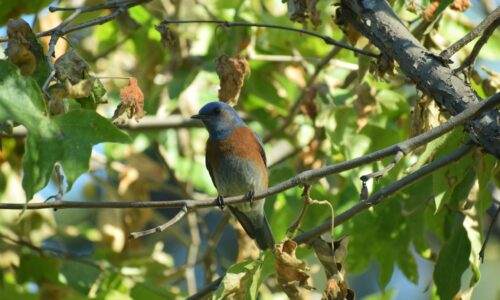
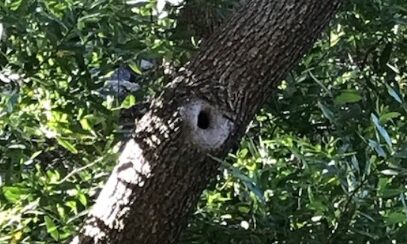
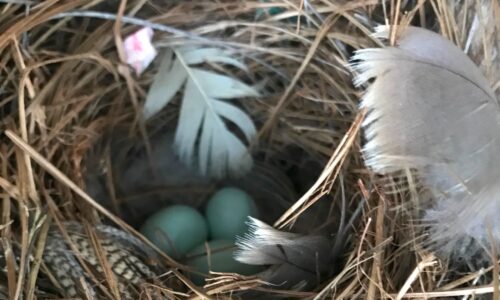
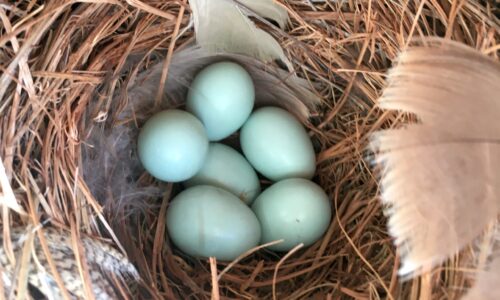
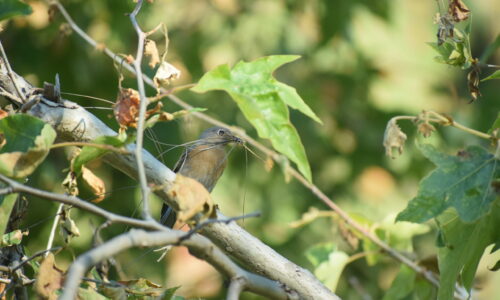
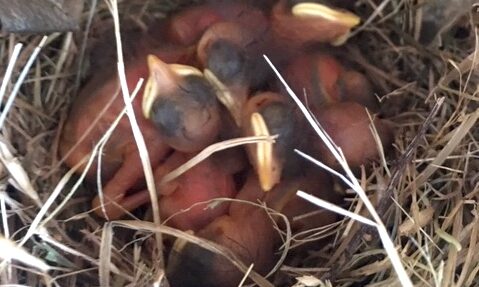
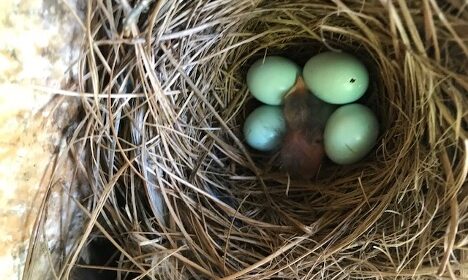







Add a Comment